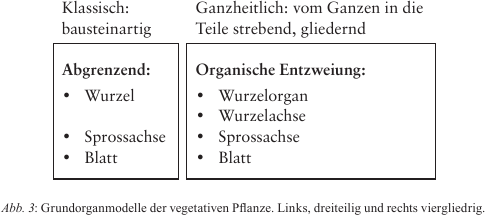Gestalt als Prozess - ergreifen und loslassen
Herbsttagung «Evolving Morphology»
Elemente der Naturwissenschaft
108,
2018,
P.
42-54 |
DOI:
10.18756/edn.108.42
Article | Language: German | €6.00
Export Article Citation as
- Plain text
- BibTeX
- RIS format
- Download price : € 6.00
Abstract:
The concept of “metamorphosis” has lost its significance, and even its meaning and content is not clearly shaped anymore. When in 1817, the second edition of Goethe’s “Metamorphosis of Plants” was released, Voigt published the first drawing of the Goethean Urpflanze as an illustration. In my biography, three crucial moments provoked me to engage with the metamorphosis of plants intensively and to continue seeking for answers. This process initiated a new model of the Urpflanzen, namely the model of a woody plant, which clearly shows corresponding relations between vegetative and flowering buds. Such an extension of the model of metamorphosis can enhance the actualisation of this concept in botany.


